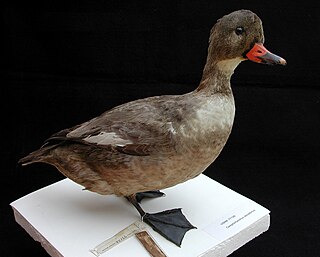
The Labrador duck was a North American bird; it has the distinction of being the first known endemic North American bird species to become extinct after the Columbian Exchange, with the last known sighting occurring in 1878 in Elmira, New York. It was already a rare duck before European settlers arrived, and as a result of its rarity, information on the Labrador duck is not abundant, although some, such as its habitat, characteristics, dietary habits and reasons behind its extinction, are known. There are 55 specimens of the Labrador duck preserved in museum collections worldwide.

Bird migration is the regular seasonal movement, often north and south along a flyway, between breeding and wintering grounds. Many species of bird migrate. Migration carries high costs in predation and mortality, including from hunting by humans, and is driven primarily by the availability of food. It occurs mainly in the northern hemisphere, where birds are funneled onto specific routes by natural barriers such as the Mediterranean Sea or the Caribbean Sea.

The New World warblers or wood-warblers are a group of small, often colorful, passerine birds that make up the family Parulidae and are restricted to the New World. They are not closely related to Old World warblers or Australian warblers. Most are arboreal, but some, like the ovenbird and the two waterthrushes, are primarily terrestrial. Most members of this family are insectivores.

The Canada goose, or Canadian goose, is a large wild goose with a black head and neck, white cheeks, white under its chin, and a brown body. It is native to the arctic and temperate regions of North America, and it is occasionally found during migration across the Atlantic in northern Europe. It has been introduced to the United Kingdom, Ireland, Finland, Sweden, Denmark, New Zealand, Japan, Chile, Argentina, and the Falkland Islands. Like most geese, the Canada goose is primarily herbivorous and normally migratory; often found on or close to fresh water, the Canada goose is also common in brackish marshes, estuaries, and lagoons.

Bird ringing (UK) or bird banding (US) is the attachment of a small, individually numbered metal or plastic tag to the leg or wing of a wild bird to enable individual identification. This helps in keeping track of the movements of the bird and its life history. It is common to take measurements and examine conditions of feather molt, subcutaneous fat, age indications and sex during capture for ringing. The subsequent recapture or recovery of the bird can provide information on migration, longevity, mortality, population, territoriality, feeding behavior, and other aspects that are studied by ornithologists. Other methods of marking birds may also be used to allow for field based identification that does not require capture.

The sandhill crane is a species of large crane of North America and extreme northeastern Siberia. The common name of this bird refers to habitat like that at the Platte River, on the edge of Nebraska's Sandhills on the American Great Plains. This is the most important stopover area for the nominotypical subspecies, the lesser sandhill crane, with up to 450,000 of these birds migrating through annually.
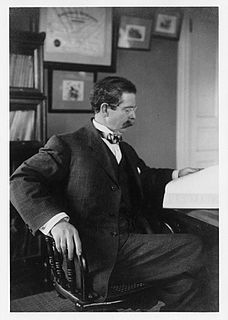
Robert Ridgway was an American ornithologist specializing in systematics. He was appointed in 1880 by Spencer Fullerton Baird, secretary of the Smithsonian Institution, to be the first full-time curator of birds at the United States National Museum, a title he held until his death. In 1883, he helped found the American Ornithologists' Union, where he served as officer and journal editor. Ridgway was an outstanding descriptive taxonomist, capping his life work with The Birds of North and Middle America. In his lifetime, he was unmatched in the number of North American bird species that he described for science. As technical illustrator, Ridgway used his own paintings and outline drawings to complement his writing. He also published two books that systematized color names for describing birds, A Nomenclature of Colors for Naturalists (1886) and Color Standards and Color Nomenclature (1912). Ornithologists all over the world continue to cite Ridgway's color studies and books.

Frank Alexander Wetmore was an American ornithologist and avian paleontologist. He was the sixth Secretary of the Smithsonian Institution.
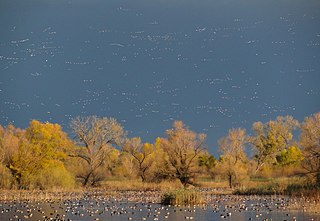
A flyway is a flight path used by large numbers of birds while migrating between their breeding grounds and their overwintering quarters. Flyways generally span continents and often pass over oceans. Although applying to any species of migrating bird, the concept was first conceived and applied to waterfowl and shore birds. The flyways can be thought of as wide arterial highways to which the migratory routes of different species are tributaries. An alternative definition is that a flyway is the entire range of a migratory bird, encompassing both its breeding and non-breeding grounds, and the resting and feeding locations it uses while migrating. There are four major north–south flyways in North America and six covering Eurasia, Africa, and Australasia.
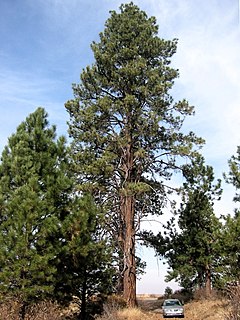
The Klamath Basin National Wildlife Refuge Complex is a wildlife preserve operated by the United States Fish and Wildlife Service in the Klamath Basin of southern Oregon and northern California near Klamath Falls, Oregon. It consists of Bear Valley, Klamath Marsh and Upper Klamath National Wildlife Refuge (NWR) in southern Oregon and Lower Klamath, Tule Lake, and Clear Lake NWR in northern California.

Upland game bird is an American term which refers to non-water fowl game birds in groundcover-rich terrestrial ecosystems above wetlands and riparian zones, which are commonly hunted with gun dogs.

The National Wildlife Refuge System in the United States has a long and distinguished history.
Hillside National Wildlife Refuge is one of seven refuges in the Theodore Roosevelt National Wildlife Refuge Complex. The refuge is an oasis of wildlife habitat surrounded by agriculture. Bounded on the east side by the unique loess bluffs of eastern Mississippi, this 15,572-acre (63.02 km2) refuge was named to reflect its location at the base of the bluffs.
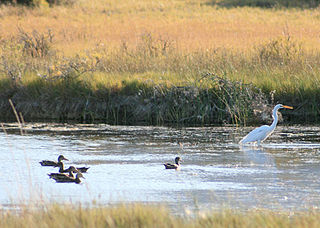
The Summer Lake Wildlife Area is a 29.6-square-mile (77 km2) wildlife refuge located on the northwestern edge of the Great Basin drainage in south-central Oregon. It is administered by the Oregon Department of Fish and Wildlife. The refuge is an important stop for waterfowl traveling along the Pacific Flyway during their spring and fall migrations. The Summer Lake Wildlife Area also provides habitat for shorebirds and other bird species as well as wide variety of mammals and several fish species. The Ana River supplies the water for the refuge wetlands.
The Arctic Goose Joint Venture (AGJV) is a conservation partnership established in 1989 between governments, organizations, and conservation groups to coordinate research and monitoring of Arctic, sub-Arctic and boreal nesting goose populations of North America, specifically the cackling goose, Canada goose, emperor goose, greater white-fronted goose, Ross's goose, and snow goose. Executing Arctic research expeditions in collaboration with partners is a primary goal of the venture, so that the logistics of such research can be coordinated efficiently. One of its main activities is to collar geese in Canada, the United States, and other nearby Arctic areas, such as Wrangel Island of Russia.

Chandler Seymour Robbins was an American ornithologist. His contributions to the field include co-authorship of an influential field guide to birds, as well as organizing the North American Breeding Bird Survey.
The North American Bird Banding Program (NABBP), along with its Bird Banding Laboratory (BBL), has its home at the Patuxent Wildlife Research Center. The program is jointly administered by the Canadian Wildlife Service and the United States Geological Survey. The program is responsible for many aspects of bird banding in the United States and Canada: it grants permits to bird banders, fills orders for bands of various sizes, collects data from banding stations, receives reports from people who have found birds carrying bands, and makes its database available to appropriate parties.

Richard Charles Banks, Ph.D. is an American author, ornithologist and Emeritus Research Zoologist on staff with the Patuxent Wildlife Research Center run by the U.S. Geological Survey and stationed at the Smithsonian Institution in Washington, DC. He is the founder of the Ornithological Council and known for his study of the migratory systems, patterns, and geographic variations of North American birds, primarily focusing on the research and analysis of white-fronted geese.
Amelia Rudolph Laskey was an American amateur naturalist and ornithologist noted for her contributions to the understanding of bird behavior. Though an autodidact without formal scientific training, Laskey made many original contributions to the field of ornithology and published in reputable scientific journals. Many publications refer to her as Mrs F.C. Laskey.
Bird fallout or migration fallout is the result of severe weather preventing migratory birds from reaching their destination. This can occur while birds are traveling south or returning to their breeding grounds. Due to the distance travelled, birds will not have enough energy to continue flight when encountering high winds. This exhaustion results in many birds resting in one area. This may be very stressful on the birds and on the surrounding ecology. Bird fallout is not particularly common, as it stems from the chance event of severe winds found in inclement weather. Due to the rare occurrence of a migratory fallout, as well as the abundance of birds resting in a single location, it is a sought-after event for birders.















